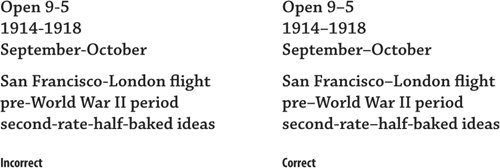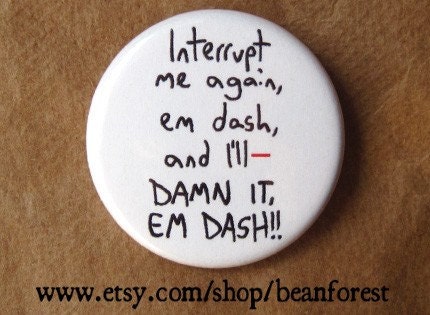Misconceptions
Perhaps you have heard these guidelines of when to use a comma:"It's when you should take a breath when reading."These mantras, though popular, are incorrect. So what the heck is a comma for? Let's find out.
"It's to indicate a pause."
"A comma takes the place of 'and.'"
"Use it around someone's name."
The truth
I like to think of commas as the support structure in a sentence. Grammar and punctuation is a lot like architecture. You can't just throw together a bunch of materials and hope it comes out right; you need the proper structure in order for it to stand up properly and be what it's supposed to be.Let's start out with a few of the most common uses for commas.
Lists
Almost always, commas are used to separate elements in lists. For example, "Today I had eggs, toast, and bacon for breakfast." Wait. Or is it "Today I had eggs, toast and bacon for breakfast"?Ah, the old debate. There are two ways of using commas in a list, and there are a lot of people who insist that one way is better than the other. For example, newspapers insist on one way (the latter in our previous example), and novels prefer another (the former).
Oxford comma
This is the form most advocated by publishing houses and academia. It includes a final comma before the "and," which, as its proponents argue, tends to eliminate unnecessary confusion.
 |
| Source unknown. If you know, tell us! |
Journalism tends to be about concision above all. If there's anything in there that is deemed unnecessary, a newspaper editor is going to cut it. That's why you almost never see that final comma in lists in a newspaper or online article.
Setting off parts of your sentence
Appositives |
| Source: Quickanddirtytips.com |
Appositives might sound scary, but they're actually pretty simple. They're just a technique for renaming something. For example, in the sentence "Barack Obama, the president of the United States, will be giving an address to the nation today," we've named Obama twice. Once with his given name, once with his title. There are many ways of doing this, like "Joe's sister, Anne, hates chickpeas."
That last sentence is an example of the confusing part about appositives. Sometimes appositives imply things about the person or thing being renamed. In this case, the fact that we used "Anne" as an appositive surrounded by commas implies that Anne is Joe's only sister. Those who know Joe would already know this, but the commas signal to the rest of us that Anne is the only sister. There is no other sister, so "Anne" and "sister" are the same thing. That puts Anne in a nonrestrictive position because she wouldn't need to be named for the sentence to mean the same thing. "Joe's (only) sister (Anne) hates chickpeas."
If Joe had more than one sister, we would leave out the commas and write "Joe's sister Anne hates chickpeas." Remember, this is because appositives are equal to the thing they're naming, but if Joe has more than one sister, then Anne only partly defines "Joe's sister." She no longer qualifies for the appositive comma escort because she's not the only sister. What if the other sisters love chickpeas? It's only fair to restrict that preference to Anne, so she takes the restrictive position next to chickpeas. "Anne is Joe's sister who hates chickpeas." But seriously, who even likes chickpeas?
Parentheticals, or Asides
Commas can also be used to set off parts of sentences that are deemed "extra information" that aren't necessary to understanding the sentence. You probably learned about them as "asides."
"The Oxford comma, despite all its detractors, is flourishing in print."
What's the aside in that sentence? An easy way to tell is to take out sections and see if the sentence still makes sense. Let's try it.
- "Despite all its detractors, is flourishing in print." Well, that doesn't make sense.
- "The Oxford comma is flourishing in print." That sounds right! Let's check the last one to be sure.
- "The Oxford comma, despite all its detractors." Yep, looks like that second one is right. So that means "despite all its detractors" is the aside.
There are actually a lot of ways to set aside an aside, but commas are used most often. If you wanted to, you could set off an aside with em dashes or parentheses. These techniques are especially useful if the aside has punctuation inside it already, like in this sentence: "Greg packed up his three favorite things—his teddy bear, his microscope, and his toothbrush—and headed out for an adventure."
Well, that's it for today. Next time we'll be discussing dependent, independent, and other types of clauses and what commas do for each of them. (Don't worry; we'll explain what clauses are.)
Is there something we missed that you want covered? Comment below and we'll add it to part two. Got any questions about this post or our polishing service? Feel free to comment or email us at castleeditorial@gmail.com.
Link to part two.
































